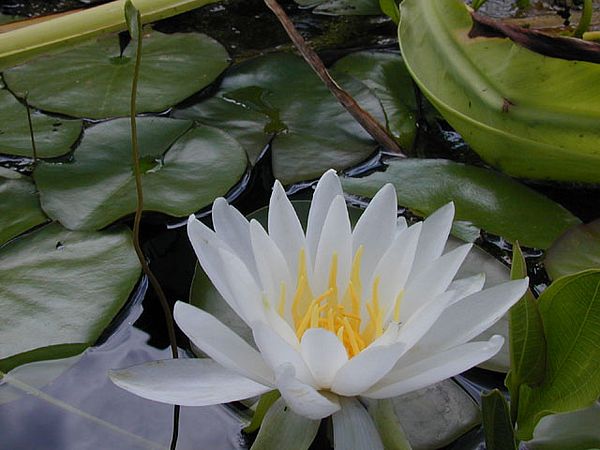The white water lilly (Nymphaea odorata) is surely reason enough to paddle in quite still waters. The plant grows in ponds, lakes, slow stream and ditches from Newfoundland to Saskatchewan and south to Central America. The plant’s gorgeous large flower bursts forth as the water’s warm. They can be found in bloom in various parts of their range between March and October.
The specific name odorata refers to the sweet smell of the flowers. Krista Janicki, a self-described perfume blogger, describes the smell as, “fresh, lightly sweet, a little aquatic and a little lemony. Sort of like the peony but without any rosiness.”
Water lilly flowers open during the day and close at night. Most are pollinated by beetles. On the first day of flowering the center of the plant is filled with fluid, and pollen is not yet released. Insects visigint get trapped in the fluid, and if the insect arrived bearing pollen, the pollen dissolves fertilizing the flower. The insect remains trapped until the next day when the flower now releases pollen over the trapped insect before it flies off to visit another flower. Once pollinated, the developing fruits mature underwater.
The showy flowers of water lilies make them attractive ornamental plants. Unfortunately, some species of the genus have become nuisance aquatic species as a result. The Mexican water lilly (Nymphaea mexicana) which is native to the gulf coast, has become a problem in California’s San Joaquin Valley.
